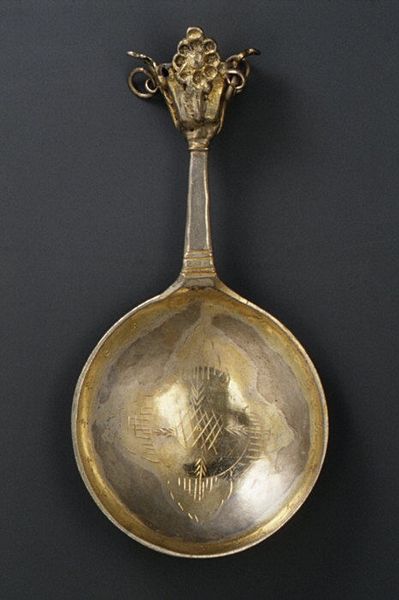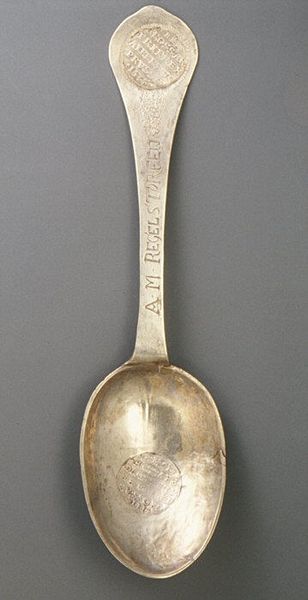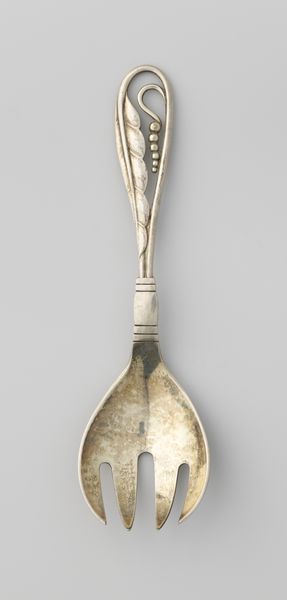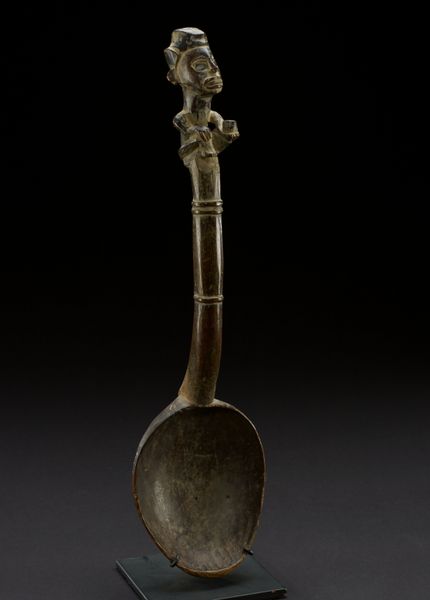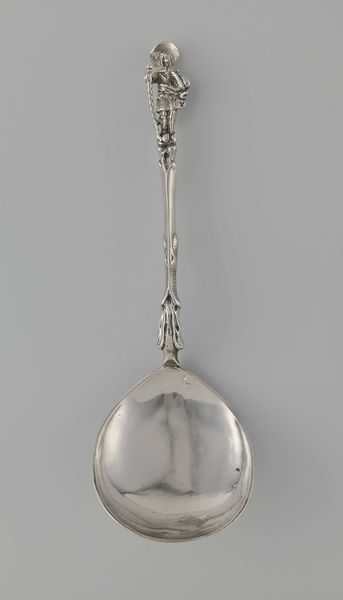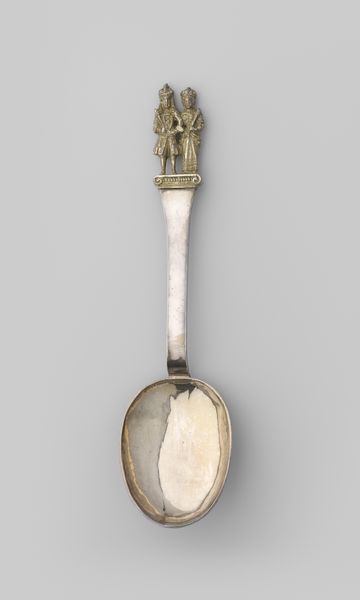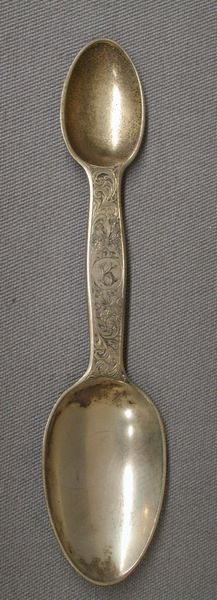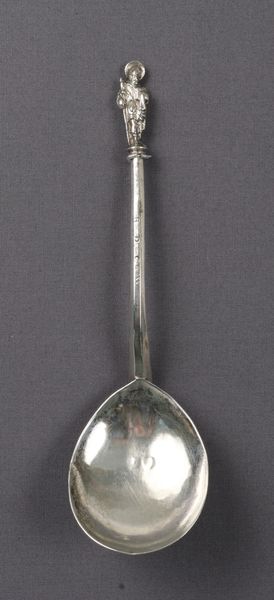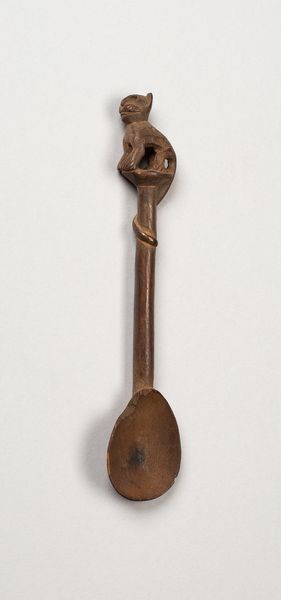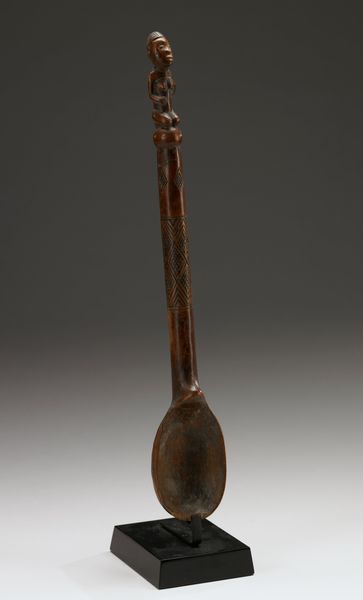
silver, metal, sculpture
#
silver
#
metal
#
sculpture
#
decorative-art
Dimensions: Overall: 5 7/16 × 2 1/16 in. (13.8 × 5.2 cm)
Copyright: Public Domain
Curator: I must say, my first impression of this spoon is that it embodies refinement, yet also hints at something ceremonial or even powerful. There is weight to the simple curve. Editor: Indeed. This "Spoon," crafted sometime between 1725 and 1750, showcases decorative art rendered in silver. Currently, it resides within the esteemed collection of the Metropolitan Museum of Art. Curator: The floral etching within the bowl and the ornate, almost heraldic, finial disrupt the plain, flat surface that constitutes the plane of the bowl. Its handle rises like a stylized scepter—suggesting a ritual use beyond mere eating. There’s an interesting tension between functional object and symbol. Editor: Such silver spoons served not just a practical purpose but also symbolized wealth and status during the 18th century. Ownership implied membership to an upper class of social structure that relied heavily on the aesthetics of aristocratic consumption. Consider how such objects circulated during periods of economic inflation! Curator: You know, its semiotic presence speaks volumes through its design. The repetition of linear motifs—seen in both the bowl’s etching and the handle’s segmented structure—creates visual harmony. The top reminds me of royalty—its apex presenting as almost crowned. This could indicate social standing by employing visual signs recognized throughout their society. Editor: Absolutely, and the political weight attached to imagery like the crowned finial isn't accidental. Silverware often featured crests, symbols of allegiance and ownership. Its function exceeds the pure utility as merely a utensil—instead positioning the silverware in this light as more or less propaganda in everyday domestic spaces of the well-to-do. Curator: Thinking in terms of the artistic intent behind it, I find myself pondering the concept of utility within ornamentation. Is this primarily a tool, an artwork, or somewhere in between? Editor: I think both are the goal. And beyond the purely aesthetic appreciation or function, considering how these utensils and dinner-sets have functioned in building cultural identity is important as well. We have only touched on the beginning aspects here. Curator: Right. There's so much more we could consider, but hopefully, we have enriched others with the tools to also think critically.
Comments
No comments
Be the first to comment and join the conversation on the ultimate creative platform.
